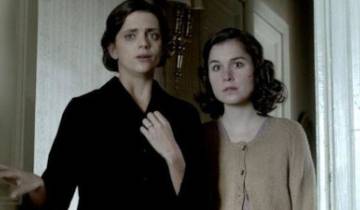
The thousand faces of Orson Welles in Quijote-Welles by Sánchez Vidal
By Pedro García Cueto
BOOK: QUIXOTE-WELLES
AUTHOR: AGUSTIN SÁNCHEZ VIDAL
EDITORIAL: FORCOLA, YEARS 2020
PAGES: 669
Many believe that the work of Orson Welles is one of the most important in the history of cinema, because it represents an act of freedom and creativity that many directors did not have. Bárbara Galway is a young journalist who, fascinated by the work of the brilliant director, decides to write a biography of the filmmaker. She realizes, throughout the interview, that Welles has two obsessions: carrying out the difficult task of making a definitive film about Don Quixote, a novel that fascinates him. The other is his love for Spain that he visited with his father because he was a friend of Juan Belmonte, hence his fondness for bullfighting from a very young age, which he later continued to cultivate when he was a close friend of Antonio Ordoñez.
Welles is determined that Steven Spielberg produce the film but he gives him long, in this other obsession nests this magnificently written book, an investigation that the renowned and great scholar of the generation of 27 and Buñuel, is tracing. I am referring to Agustín Sánchez Vidal who leaves his rich and elaborate prose so that we can see, as if it were a camera, the world of La Mancha, everything that surrounds that space of light that fascinated Cervantes and obsessed Welles. As Sánchez Vidal says when he confronts Don Quixote:
“Unlike so many classic books, Don Quixote is not an archaeological residue of worlds already abolished. He is as alive as his people, fatalistic and judgmental, with their oblique conversations, enlisted in proverbs”.
Different landscapes alternate in the book, that of La Mancha, which describes a Sánchez Vidal in a state of grace that recalls and evokes those moors where Quixote and Sancho have traveled: "The rustic talonea impatiently looking for his donkey", but also the Welles's world, that of Hollywood, what he tells us about Rita Hayworth, a woman who failed because of her father's mistreatment and so many others that appeared in her life, but also about her filming, about the films she shot in Spain, as you can see to Chimes at Midnight and Mister Arkadin. There is another landscape present, that of Welles's imagination, always active, always in chiaroscuro, where phantasmagorical beings live who range from Othello to Quixote, passing through Mister Arkadin or Harry Lime from The Third Man.
It is worth highlighting the letters that famous people from Spanish cinema such as María Asquerino or Gil Parrondo send to Bárbara Galway, useful for her book. In them we see the egocentric, angry Welles, who treats the technicians badly, who even asks, in a rude way, to sleep with the famous Spanish actress, who rejects him, provoking the wrath of the genius. Here we see a Welles who only lived for his greatness, for his genius, for his movies. He himself confesses that most of them were destroyed in the assembly, which distanced him from Hollywood.
The worlds alternate in the book, the interview that breathes little by little, where we see the real Welles, the universe of Don Quixote and La Mancha, which Sánchez Vidal traces little by little in magnificent descriptions, but also that love for Spain, which is present throughout the book.
I am left with that image of Ronda that Sánchez Vidal conveys, the city that the filmmaker fell in love with and that led him to choose it as his final resting place:
“And, above all places, Ronda. The magical and self-absorbed city, the most beautiful that his eyes have seen”.
There is rich information in the book about all of Welles's cinema, but the greatest achievement is that way of drawing parallels between the world he imagines, the one projected by La Mancha and the one produced by cinema.
I believe that Sánchez Vidal's main objective is to draw a line where Quixote and Welles are the same person, both seek a chimera, a desire that is beyond what is attainable. This is where the book triumphs, between the real character (Welles) and the imagined one (Don Quixote) there is a mimicry that surrounds everything.
Great effort has been made by the great Aragonese researcher to capture so many parallel worlds, when reading this Quixote-Welles (edited with great elegance by the Fórcola publishing house with a cover photograph where Orson Welles and Akim Tamiroff appear on the set of the film) we see two greats who seek the same thing: transcend what they believe, make their dreams come true, from the world of chivalry to the world of cinema there is a step in this book. Quite a challenge that Sánchez Vidal has achieved. A necessary book to get to know Welles better and see in him the Quixote he always was.


